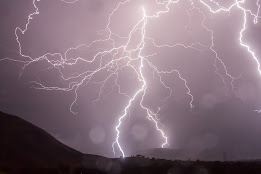Fractals in Nature: The Hidden Geometry

Have you ever noticed how trees, rivers, and even lightning bolts share strikingly similar branching patterns? These natural designs are not random—they are fractals, intricate self-repeating structures that appear at different scales. Though perfect fractals exist only in mathematics, nature comes remarkably close, using fractal-like patterns to maximize efficiency and functionality.
Let’s explore how fractals shape the natural world, from the towering trees to the tiniest leaf veins, and uncover the hidden geometry that makes life more efficient and beautiful.
What Are Fractals?
A fractal is a geometric pattern that repeats at different scales. This means that if you zoom in on a small section of a fractal, it resembles the larger whole. In nature, fractals form when a simple process—such as branching or splitting—repeats over and over, creating complex patterns with minimal effort.
Fractals can be seen in:
Trees and plants – Branching patterns in trees and veins in leaves.
Lightning and rivers – The way electrical discharges and waterways branch.
Blood vessels and lungs – The efficient networks of arteries, veins, and airways.
These patterns are not just aesthetically pleasing; they serve crucial functions in biology and physics.
Fractals in Trees and Plants
 |
1. The Branching Blueprint: Fractal Trees
The most obvious example of a fractal in trees is their branching structure. A tree starts with a main trunk, which splits into large branches. These branches divide into smaller ones, which further subdivide into twigs. This self-similarity continues until we reach the leaves.
This fractal branching pattern serves several purposes:
Maximizing Light Capture – More surface area allows the tree to absorb more sunlight for photosynthesis.
Efficient Resource Transport – The network ensures that water and nutrients reach every part of the tree.
Structural Stability – The repetitive pattern helps trees withstand wind and environmental stresses.
From the mighty oak tree to the delicate weeping willow, this branching pattern is a universal strategy for growth.
2. Fractals in Leaf Veins: A Miniature Tree
Look closely at the veins of a leaf, and you’ll notice a similar fractal pattern.
Midrib (Main Vein) – Acts like a tree trunk, running down the center of the leaf.
Lateral Veins – Branch out from the midrib, resembling large tree branches.
Veinlets – These smaller veins divide further, mirroring the structure of the entire tree.
This fractal network ensures that water, minerals, and sugars are efficiently distributed across the leaf, allowing it to function optimally.
3. Fern Fronds: A Living Fractal
Ferns are one of the best examples of natural fractals. Each frond (leaf) consists of smaller fronds, which in turn consist of even tinier leaflets, all arranged in a self-similar pattern.
This structure helps ferns maximize photosynthesis while using minimal material, making them one of nature’s most efficient designs.
Why Does Nature Use Fractals?
Fractals are not just visually mesmerizing—they provide real benefits:
🔹 Efficiency – Fractal branching allows organisms to distribute resources (water, nutrients, light) with minimal energy.
🔹 Strength and Stability – Trees and blood vessels use fractals to grow strong yet flexible structures.
🔹 Adaptability – These patterns allow plants and animals to function effectively in diverse environments.
The Limits of Fractals in Nature
While nature follows fractal patterns, true fractals (which repeat infinitely) exist only in mathematics. In the real world, physical and environmental limits prevent perfect fractal growth.
Size Constraints – Trees can’t grow infinitely tall, and leaf veins can only get so small.
Environmental Influences – Wind, water, and soil conditions can alter fractal growth.
Energy Limits – Biological systems must balance energy use, preventing infinite fractal repetition.
Despite these limitations, nature’s use of fractals is a testament to their efficiency and beauty.
Fractals Beyond Trees: A Universal Pattern
The same fractal principles found in trees and leaves appear throughout nature:
Lightning – The jagged path of a lightning bolt follows the same fractal branching as tree roots.
River Networks – Rivers split into smaller streams, resembling leaf veins.
Blood Vessels – The circulatory system mirrors tree-like fractal branching, ensuring every cell receives oxygen.
Even galaxies, clouds, and coastlines show fractal-like patterns, proving that nature follows this geometric blueprint at every scale.





